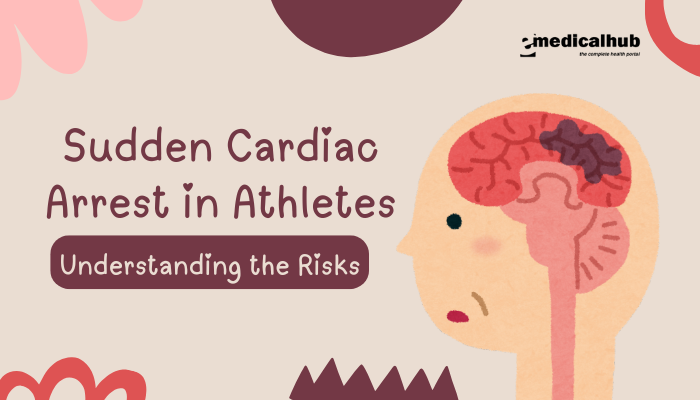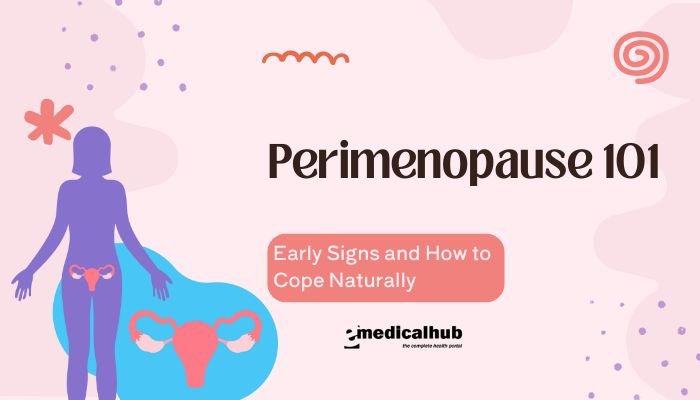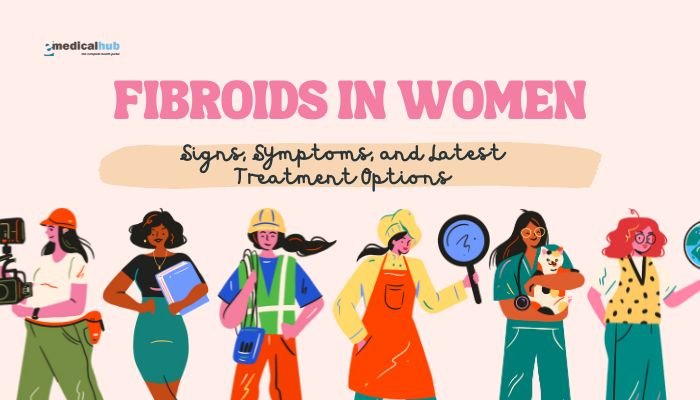Introduction
Sleep is a cornerstone of good health, yet many adults struggle to get enough quality rest on a daily basis. Extended work hours, endless digital stimulation, and high levels of stress often translate into restless nights and groggy mornings.
While numerous factors influence how well we sleep—from underlying medical conditions to one’s genetics—adhering to good sleep hygiene practices is a significant, accessible step toward achieving more restorative rest.
Sleep hygiene refers to the habits and environments that foster consistent, uninterrupted slumber. This article explores the essential elements of optimal sleep hygiene, offering practical tips on scheduling, evening routines, bedroom setup, diet, exercise, and more.
Whether you experience occasional insomnia or simply feel that you could improve your sleep quality, these strategies can help pave the way for a healthier relationship with bedtime.
Understanding Sleep Hygiene
Defining Sleep Hygiene
- Concept: Sleep hygiene encompasses behavioral and environmental factors that set the stage for deep, uninterrupted sleep.
- Influence: It addresses daily routines—like caffeine intake, evening wind-down activities, or bedroom conditions—that either sabotage or support healthy sleep patterns.
Why It Matters
- Health Consequences: Chronic poor sleep correlates with increased risk for obesity, diabetes, cardiovascular disease, mood disorders, and reduced cognitive performance.
- Immediate Benefits: By establishing consistent, healthy routines, many people experience improvements in energy, mood, and overall daytime functioning.
Common Barriers
- Tech Overuse: Screens emitting blue light disrupt circadian signals.
- Stress: Overthinking, racing thoughts keep the mind active at night.
- Irregular Schedules: Shift work, social activities, or travel can jostle the body’s internal clock.
Takeaway: Even small modifications to everyday routines—like controlling light exposure or setting consistent bedtimes—can yield major sleep gains over time.
Establishing a Consistent Sleep Schedule
The Power of Routine
- Circadian Rhythm: Our body’s internal clock thrives on regularity. Going to bed and waking up at the same time trains the brain to expect sleep at a certain hour.
- Weekends vs. Weekdays: Large discrepancies (e.g., sleeping in much later on weekends) lead to “social jet lag” and Monday morning grogginess. Minimizing this difference enhances stable sleep patterns.
Recommended Sleep Duration
- Adults: Generally 7–9 hours a night. Some do well on 7, others need 9 to feel truly rested.
- Experiment: If you feel sharp and energized all day with minimal caffeine, likely you’re meeting your personal sleep need.
Tips for Consistency
- Bedtime Alarm: Use an alert or reminder to start winding down 30 minutes to an hour before bed.
- Gradual Adjustments: Move your bedtime or wake time by 15-minute increments over days/weeks rather than abrupt shifts.
Setting an Evening Wind-Down Routine
Importance of Unwinding
- Transition Phase: Shifting from daytime hustle to a relaxed mental state is crucial. Without a calm wind-down, residual stress or excitement can delay sleep onset.
- Physiological Changes: Heart rate, core temperature, and hormone levels must gradually shift to signal sleep readiness.
Activities and Rituals
- Dim the Lights: Lowering brightness helps the body produce melatonin, the “sleep hormone.”
- Limit Electronics: Blue light from screens disrupts circadian rhythms. Ideally, power down devices at least 30–60 minutes pre-bedtime.
- Gentle Stretches or Yoga: Calms muscles, releases tension.
- Reading (Non-Electronic): Or journaling with a small bedside lamp can help shift the mind from daily tasks to a more restful state.
- Relaxation Techniques: Deep breathing, progressive muscle relaxation, or mindfulness meditation.
Avoiding Stimuli
- High-Intensity Work or Games: Checking emails or playing action-packed video games close to bedtime can keep the brain wired.
- Emotional Conversations: Heated discussions or major planning sessions can cause stress hormones to spike, hindering a smooth bedtime transition.
The Sleep Environment: Bedroom Conditions
Temperature and Ventilation
- Cool is Better: Experts suggest around 60–67°F (15–19°C). A cooler environment signals the body to reduce core temperature, aiding sleep.
- Airflow: Slight ventilation can keep oxygen fresh, but drafts or dryness might disturb sensitive sleepers. Personal preference matters.
Light Control
- Darkness: Light exposure (especially blue light) can suppress melatonin. Use blackout curtains or a sleep mask if external lights intrude.
- Nightlights: If needed for navigation, choose dim, warm-spectrum lights that minimize circadian disruption.
Noise Management
- Silence: Or minimal noise fosters deeper sleep. Earplugs, white-noise machines, or soft fan sounds can drown out disturbances.
- Sudden Sounds: Alarms, traffic, or snoring bed partners hamper continuous sleep. Address them with earplugs, repositioning or medical evaluation for partner’s snoring.
Comfort and Bedding
- Mattress: A supportive, comfortable mattress that suits your body’s needs (firm, plush, or somewhere in-between) is key.
- Pillows: Proper neck and spine alignment reduces aches that can disrupt sleep.
- Bedding Materials: Breathable fabrics (cotton, bamboo) help regulate temperature and prevent sweating.
Diet, Nutrition, and Timing
Evening Meals
- Timing: Heavy or large meals right before bed might cause indigestion or reflux, interfering with comfortable sleep. Aim to finish dinner at least 2–3 hours before bedtime if possible.
- Light Snacks: If hungry near bedtime, choose small items with a balance of complex carbs and proteins (e.g., a banana with peanut butter). Overly sugary or spicy items can disturb rest.
Caffeine and Stimulants
- Cut-off Times: Consuming coffee, tea, or caffeinated sodas late afternoon or evening can hamper sleep. Many find restricting caffeine after 2–3 p.m. beneficial.
- Personal Tolerance: Some are more caffeine-sensitive. Track your consumption patterns and note the effect on nighttime rest.
Alcohol and Smoking
- Alcohol: Though it may make you drowsy, it fragments sleep and can cause early awakenings, thus undermining overall quality.
- Nicotine: Acts as a stimulant, especially near bedtime, making sleep onset harder.
- Moderation or Cessation: Avoiding or reducing these substances fosters more stable sleep cycles.
Exercise and Physical Activity
Exercise Benefits
- Daytime Physical Exertion: Enhances sleep drive, with moderate or vigorous workouts linked to deeper, more consolidated sleep.
- Stress Relief: Reduces anxiety or tension that can hamper bedtime relaxation.
Timing Matters
- Avoid Late-Night Intensives: High-intensity training close to bedtime elevates core temperature and adrenaline. Some individuals can handle it, but many find it detrimental to winding down.
- Early Morning or Late Afternoon: Generally recommended times to optimize exercise’s beneficial effects on circadian rhythm, leaving hours for the body to cool and calm before bedtime.
Gentle Evening Routines
- Yoga and Stretching: Encourages relaxation, might help if your schedule only allows evening workouts, but aim for low-intensity movements.
Stress Management and Mental Health
Impact of Stress on Sleep
- Racing Mind: Worries or an overactive mental state can prolong sleep onset latency.
- Cortisol Levels: Chronic stress leads to elevated cortisol that disrupts the normal nighttime drop essential for restful sleep.
Relaxation Techniques
- Meditation or Deep Breathing: As little as 5–10 minutes before bed can ease the mind.
- Progressive Muscle Relaxation: Tensing and then releasing each muscle group can systematically calm the body.
- Guided Imagery: Visualizing peaceful landscapes or scenarios to distract from anxious thoughts.
Cognitive Behavioral Therapy for Insomnia (CBT-I)
- Structured Therapeutic Approach: Helps address negative thought patterns and habits that perpetuate insomnia.
- Evidence-Based: Shown to have lasting effects, often recommended above or alongside medication for chronic insomnia.
Avoiding Common Sleep Pitfalls
Screen Time Before Bed
- Blue Light: Smartphones, tablets, or laptops emit wavelengths that suppress melatonin, shift circadian rhythms.
- Social Media Overstimulation: Engaging content or stressful news disrupts psychological relaxation.
- Solutions: Use night mode filters, set device “bedtime” or physically remove them from the bedroom.
Inconsistent Napping
- Short Power Naps: 20–30 minutes can boost midday alertness, but extended or late-afternoon naps risk complicating nighttime sleep.
- Insomnia Patients: Often better skipping naps to preserve “sleep hunger” for bedtime.
Chronic Clock-Watching
- Anxiety Spiral: Repeatedly checking the time when struggling to doze off increases stress.
- Technique: If unable to sleep after ~20 minutes, get up, do something relaxing in low light, and return to bed once sleepy again.
When to Seek Professional Help
Signs of Chronic Insomnia or a Sleep Disorder
- Persistent Difficulty: If you struggle with falling or staying asleep at least three nights a week for over a month, consider a formal evaluation.
- Daytime Impairment: If frequent fatigue, irritability, or concentration issues hamper daily life.
- Possible OSA: Loud snoring, observed pauses in breathing, or morning headaches may suggest obstructive sleep apnea, prompting medical assessment.
Diagnostic Tools
- Sleep Diaries: Documenting bed/wake times, perceived sleep quality, naps, and external factors can be revealing.
- Actigraphy: Wearable devices measure movement patterns to approximate sleep-wake cycles.
- Polysomnography: Overnight lab test measuring brain waves, oxygen levels, heart rate, and muscle movements, typically for suspected sleep apnea or other disorders.
Treatments and Therapies
- Medication: Under medical guidance, short-term use of sleep aids, but many carry side effects or risk dependence.
- Cognitive Behavioral Therapy for Insomnia (CBT-I): A mainstay for long-term beneficial change.
- Specialty Clinics: Sleep labs or centers with multidisciplinary teams (physicians, psychologists, respiratory therapists) can tailor interventions.
Conclusion
Quality sleep is fundamental, not a luxury. Fostering better sleep hygiene—through consistent bedtimes, curated bedtime routines, controlled bedroom environments, mindful consumption of caffeine or alcohol, and addressing stress—can dramatically boost physical health, mental sharpness, and emotional resilience. While occasional disruptions can happen due to life events, ensuring that overall daily habits and environments are sleep-friendly helps keep nighttime rest consistent and restorative.
Should basic improvements fail or if you experience severe symptoms like loud snoring with daytime sleepiness or persistent insomnia, professional evaluations can uncover treatable conditions such as obstructive sleep apnea or other sleep disorders. By partnering with healthcare providers, employing cognitive-behavioral strategies, or using medication judiciously, individuals can reclaim healthy sleep patterns. Ultimately, investing in better sleep hygiene is an investment in one’s overall well-being—leading to sharper days, balanced moods, and better long-term health outcomes.
Frequently Asked Questions (FAQ)
- How many hours of sleep do I really need?
- Most adults function best on 7–9 hours per night. However, some might need slightly less or more. If you feel rested, alert, and not reliant on stimulants, you’re probably meeting your requirement.
- Is watching TV to relax before bed okay?
- Using screens close to bedtime can hinder melatonin release. If you do watch TV, keep the volume low, avoid intense or emotionally charged content, and possibly use “night mode” settings.
- Can I catch up on lost sleep during weekends?
- Some compensation can happen, but it’s not as beneficial as consistent nightly rest. Large schedule swings create circadian rhythm confusion.
- Is a nightcap helpful for sleeping?
- While alcohol can make you drowsy initially, it disrupts later sleep stages, causing fragmented sleep. So it’s not recommended for better rest.
- Why do I wake up in the middle of the night and can’t fall back asleep?
- Frequent culprits include stress, environment changes, or inconsistent schedules. Try relaxation techniques and avoid bright lights or phone usage if you do get up.
- Which is better, CPAP or a snoring mouthpiece, for my loud snoring?
- If you have moderate-to-severe sleep apnea, a CPAP is more effective. Mild cases or simple snoring might be managed with an oral appliance. A sleep study clarifies the best approach.
- Does sleeping in a cold room help weight loss?
- While a cooler room can slightly boost metabolic rates and enhance sleep quality, major weight changes hinge on balanced diet, exercise, and overall health habits.
References
- Hirshkowitz M, Whiton K, Albert SM, et al. National Sleep Foundation’s updated sleep duration recommendations: final report. Sleep Health. 2015;1(4):233-243.
- Watson NF, Badr MS, Belenky G, et al. Joint consensus statement of the AASM and SRS on recommended amount of sleep for a healthy adult. J Clin Sleep Med. 2015;11(6):591-592.
- Buysse DJ. Sleep health: can we define it? Does it matter? Sleep. 2014;37(1):9-17.
- St-Onge MP, Grandner MA, Brown D, et al. Sleep duration and quality: impact on lifestyle behaviors and cardiometabolic health. Circulation. 2016;134(18):e367-e386.
- American Academy of Sleep Medicine (AASM). Clinical practice guideline for the treatment of chronic insomnia. J Clin Sleep Med. 2017;13(2):307-349.
- Irish LA, Kline CE, Gunn HE, et al. The role of sleep hygiene in promoting public health. Curr Sleep Med Rep. 2015;1(3):187-194.
- Cartwright RD. Sleeping together: A pilot study of the effects of shared sleeping on adherence to CPAP therapy. Sleep Breath. 2008;12(3):329-334.
- Horne JA, Reyner LA. Counteracting driver sleepiness: effects of napping, caffeine, and prophylactic rest breaks. Sleep. 1996;19(3):S256-S263.
- Perlis ML, Smith MT, Jungquist C, et al. The design of CBT for insomnia. Clin Psychol Rev. 2009;29(3):65-80.
- Watson NA, Burgess HJ. Personalizing circadian rhythm interventions for insomnia. Curr Sleep Med Rep. 2021;7(4):115-127.
- Stepanski EJ, Wyatt JK. Use of sleep hygiene in the treatment of insomnia. Sleep Med Rev. 2003;7(3):215-225.
- Liu Y, Wheaton AG, Chapman DP, Cunningham TJ, Lu H, Croft JB. Prevalence of healthy sleep duration among adults in the US, 2014. MMWR Morb Mortal Wkly Rep. 2016;65(6):137-141.
- Drake CL, Jefferson C, Roehrs T, Roth T. Stress-related sleep disturbance and polysomnographic results. J Psychosom Res. 2003;54(1):29-35.
- Wolfson AR, Carskadon MA. Sleep schedules and daytime functioning in adolescents. Child Dev. 1998;69(4):875-887.




